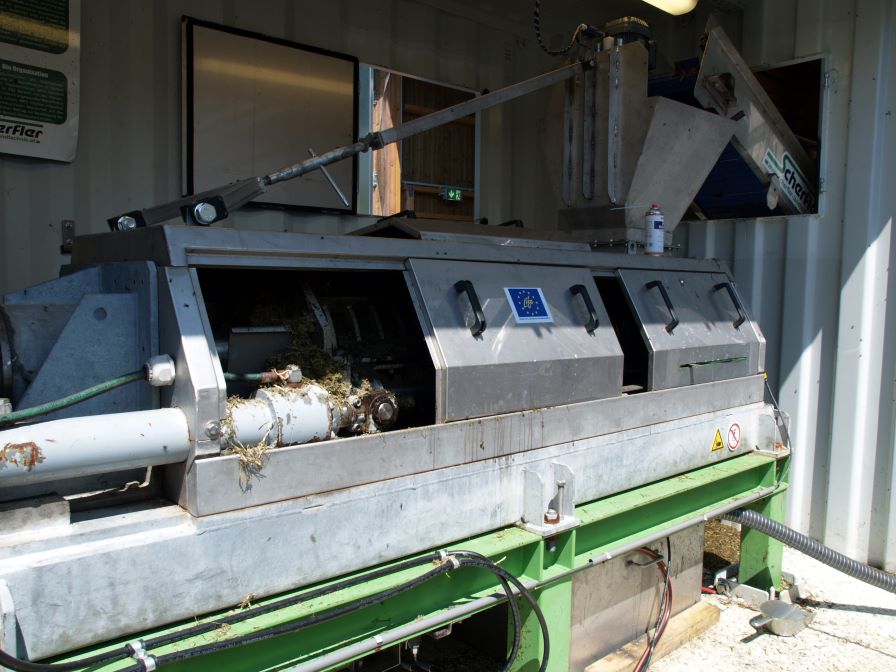The green biorefinery represents an opportunity to produce high-protein feed for monogastric livestock (poultry and pigs) from fiber-rich grassland feed. This protein-rich feed does not compete with human nutrition. Therefore, as part of the EU project Farm4more (LIFE18CCM/IE/001195), a new biorefinery plant was built and tested on a practical scale with silages made from grass clover and red clover.
After biorefining, the fresh pressed juice was thickened after a short storage period for further use as mongastrid feed and added to a compound feed, while the fresh press cake was ensiled again in round bales. Samples of silage, press juice, fresh press cake and re-ensiled press cake were examined for nutrient composition, fermentation parameters, amino acids and biogenic amines. In addition, the digestibility of silage and re-ensiled press cake tested .
We found that the pressed juice contained about 205 g/kg DM (dry matter) crude protein, more than 180 g/kg DM crude ash and more than 130 g/kg DM volatile organic compounds such as fermentation acids, ethanol and ammonia. In addition, the pressed juice had an unfavorable amino acid ratio for use as monogastrid feed (methionine and cysteine contents were low) and the content of biogenic amines was increased compared to the starting silage. The type of feed (grass clover or red clover) had little influence on the feed value of the pressed juice. The re-ensiling of press cake was successful because a sufficient reduction in the pH value and a concentration of lactic and acetic acid, as well as other volatile organic compounds, which is usual for silage, were observed. The press cake had a crude protein content that was 26-36 g/kg DM lower and a metabolic energy content that was 0.77-1.12 MJ/kg DM lower than silage, with the differences being greater for red clover silage than for that Clover grass silage.
Pressed juice can be used as feed for monogastrids, but its use is limited due to the low crude protein content compared to protein concentrates and the unfavorable amino acid pattern. Press cake could be a suitable feed for ruminants , especially dry cows or calves.
More detailed results of this experiment can be found in the journal article and in the conference proceedings of the 2023 Conference for Organic Agriculture.
More about this: Online Library






